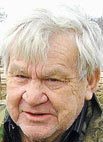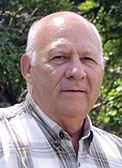
Some cattlemen select their breed of cattle after carefully considering all the characteristics of a particular breed, and then choosing the one that suits their tastes best. However, some producers are not satisfied with the characteristics any single breed can offer them. One alternative for those producers who want more is to select a breed like Beefmasters.
The Beefmaster breed was founded in 1954 by Tom Lasater. He selected animals from three breeds, with the resulting animals being 1/4 Shorthorn, 1/4 Herford and 1/2 Brahma. The animals he used to create his foundation herd were chosen based on what he called “the six essentials.” Those six characteristics he thought were so important were disposition, fertility, weight, conformation, milk production and hardiness – traits that many producers, like D.R. Cofield and his son Gerald, still value today.
In D.R.’s experience, Beefmasters have more than the original six desirable characteristics: Durability, longevity, and reproductive ability all came to D.R.’s mind. He started raising Beefmasters 10 years ago, and still has some of the same cows. D.R. said, “Beefmaster cows will produce more over their lifetime than other breeds.” He and Gerald expect their cows to have a calf every year, and if one doesn’t, she is culled.
They also place a lot of value on the hardiness of their Beefmasters. During this past tough winter, their animals did an excellent job of adapting and thriving in the harsh conditions. They have implemented a different breeding season for their herd, which they think makes a big impact. Where most cattlemen have spring or fall calving seasons, the Cofields try to avoid the cold weather altogether. They like to have their calves on the ground between August 9 and October 20.
By having calves in the early fall, the calves have more growing time before the chills of winter start to take their toll. D.R. and Gerald feel like the heavier calves are heartier throughout the winter, and when weaning time rolls around, they can be weaned on wheat pasture. “Having calves on wheat pasture for 30 to 60 days is like having them backgrounded before the spring sale season,” Gerald said.
The Cofields are trying out many new ideas, thanks to Gerald’s recent training. After the Lamar, Mo., business O’Sullivan Industries closed its doors in 2007, Gerald attended Crowder College, and graduated last May with a degree in Agribusiness Technology, with an emphasis in Livestock Production. Since then, he has been helping his father with their Beefmaster herd and has been trying out some of the ideas he learned in college.
D.R. and Gerald are following the lead of Beefmaster Breeders United and are learning that even tried and true management choices can be improved. BBU offers an “upgrade” program for Beefmaster animals that involves breeding a Beefmaster bull to an Angus cow, then breeding the offspring back to Beefmaster for three generations. The resulting animal can still be registered as a Beefmaster, but may show some desirable characteristics of the Angus breed.
Beefmasters have proved to be a good choice for D.R. and Gerald. The characteristics that the breed is prized for have been a good fit for their operation.







